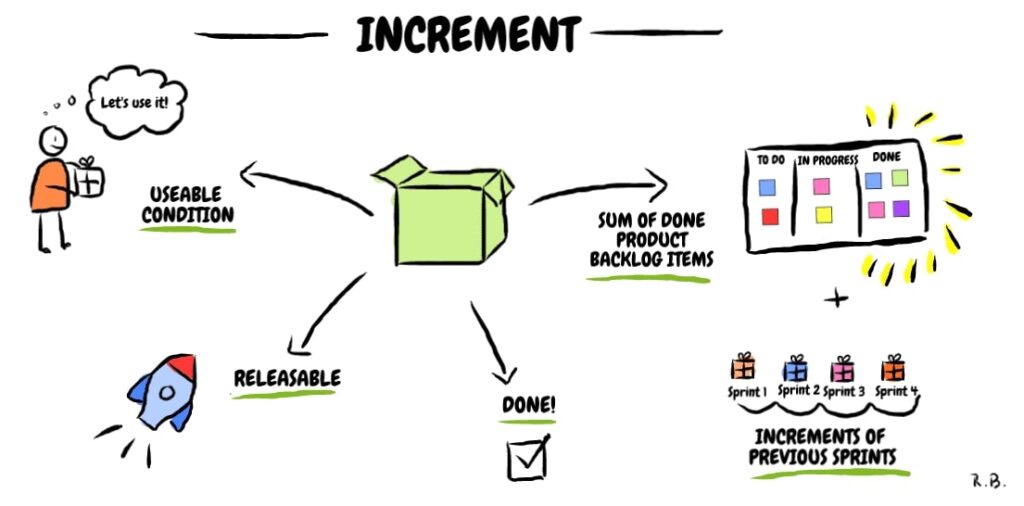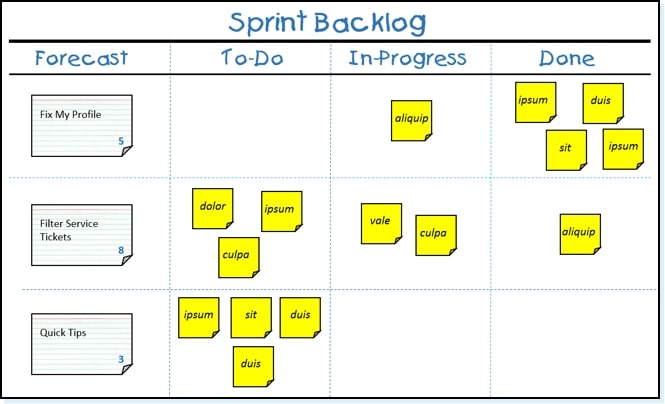Every software development team uses a project management technique to organize their work and track their progress. Establishing a workflow enables project teams to be more efficient and effective in their roles.
Today, various workflow management approaches help software development teams to be more productive. Agile workflow management is one such technique gaining popularity in recent years. It is an iterative approach that allows teams to deliver more value.
If you want to learn about agile development workflow, you’ve come to the right place.
In this article, we discuss what agile workflow management is and how it helps your team be more productive.
Building a Workflow for Agile Project Management
When it comes to project management, project teams spend weeks and even months on a single project. It is costly and time-consuming. Furthermore, it also leads to frustration among team members who feel that they aren’t making progress.

Credits: Let’s Scrum It
The agile software development cycle addresses these issues. It is an iterative approach that allows teams to create quality products and improves customer satisfaction. This approach also incorporates customer feedback so that team members learn and adapt quickly. It aims for continuous improvement and better team collaboration.
Basic States of Agile Workflow Process
The agile workflow process comprises the following basic states:
Creating To-Do List
The first step is to create a to-do list of tasks to complete. This list needs regular updating to ensure that the project is on track.
In-Progress Tasks
The next step is to identify the tasks that are in progress. It helps team members to focus on those tasks in order to complete them at the earliest.
Code Review
The third step is to review those recently-completed tasks. It enables project development teams to identify errors and potential improvements.
Done Tasks
The fourth and final step is to identify all completed tasks. It helps team members to see the progress they have made.
Additional States
Some agile teams also utilize additional states for their workflow. These states provide more accurate tracking of a team’s progress.
Awaiting QA
This state indicates a task that the agile team has accomplished but the quality assurance team has yet to review.
Ready to Merge
This state indicates a task that a quality assurance team reviews and approves. The task now forms part of the main development branch.
You don’t need an additional team to manage the states of an agile workflow process. The agile team handles all the tasks by themselves.
Every software development project has unique requirements. While working with agile teams, everyone has specific requirements depending on the project type, tools, technology, and methods employed
Altering the working style according to the requirements of any project management tool is perplexing for most teams. In such cases, it seems that the team is not making use of the tool to its potential. To avoid this, it’s better to use a tool that allows teams to configure it to suit their needs.
Optimize the Workflow Process
Optimizing the agile workflow is an integral part of being productive. It helps the team focus on pending tasks and avoid wasting time on unnecessary activities.
As teams become familiar with the basics of Agile methodology, they start to optimize their workflow by adding additional states. They need to create statuses that indicate the progress of each task. It allows team members to see the progress of each task and avoid wasting time on tasks that do not contribute to the team’s progress towards their goal.

Credits: Scrum.org
Agile teams must also design the statuses to share with the rest of the organization. It helps to build transparency and effective team collaboration. While building a workflow management process, agile teams need to figure out the important metrics that the team must track. They also need to pinpoint the aspects of any task that non-members want to know about.
A well-managed agile workflow process answers the following questions:
- What tasks has a team accomplished?
- What tasks is the team working on?
- Are there any obstacles that are hampering the progress of the team?
- What is the estimated time to complete each task?
- What items have the team included in each status?
Once the team has answered all these questions, it needs to work on a steady work stream by improving the process. Work in Progress (WIP) limits enable project management teams to track the issues in a state of workflow and prevent them from adding more issues to the system.
Focusing on WIP limits allows teams to figure out the processes slowing them down and work on them to optimize their workflow. A team must optimize its workflow by understanding the steps taking more time than others and finding ways to improve them.
Major Challenges in Scaling an Agile Workflow
Scaling agile workflows enables a project team to work with extensive data sets without compromising quality or accuracy. It also helps teams to manage projects with large numbers of stakeholders. However, the agile workflow process is not easy to scale as there are numerous challenges that a team needs to overcome. Let’s learn about them.
Cultural Shift
The most significant challenge in scaling agile workflows is the cultural shift. It is necessary to change the mindset of the team members from traditional ways of working to agile methods. The team needs to be open to new working methods and be willing to experiment with different processes.
It is also essential to educate the team members about agile principles and their benefits. The team needs to have a clear understanding of the agile process and how the team uses it to improve their work.
Insufficient Innovation
Another challenge that teams face when scaling agile workflow is insufficient innovation. The team needs to experiment with new processes and ways of working. It is vital for a team to encourage team members to share their ideas and thoughts about the project. The team must also be willing to try new things and experiment with different approaches.
In large enterprises, working with an agile method requires additional attrition after the release of any product. It also requires testing and validation of the product before it is ready for release.
Lack of Customizable Processes and Tools
Scaling agile workflows also requires teams to access customizable processes and tools. The team must adapt the agile process to their specific needs and requirements. It is also necessary to have the right tools to support the agile methodology.
The team must also integrate the agile process with the existing tools and processes. It isn’t easy to scale agile workflows without the right tools and processes.
Build an Agile Workflow Today
Agile teams overcome several challenges by sharing their workflow with other teams of the organization. It helps them transition from traditional project management methodologies to agile development methods. This way, teams learn from the experience of others and improve their workflow processes.
So, share your retrospective with other teams from time to time and help them improve their processes.